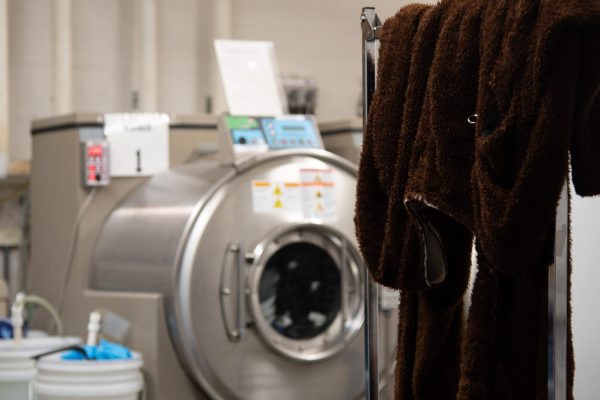D1 Athletics
In order for you to read this article it had to be researched, written, put through three rounds of editing, laid out to fit the page, exported to the printer and finally delivered to the newspaper rack from which you picked it up.
The development of a finished product often requires an arduous process and college athletics is a prime example.
Consider that the men’s basketball team played 32 games this season, each game lasting about two hours. If you don’t have a calculator handy, that’s 64 hours of gameplay in an entire season.
The NCAA limits student-athletes to 20 hours per week of required practice and training during the season. Considering travel time, games and voluntary work it’s no surprise that athletes regularly commit even more than that to their craft.
First-year basketball player Ethan O’Day — 9 points, 4 rebounds and a block in Saturday’s America East Championship Game — knows first-hand the commitment a student-athlete makes.
“During the season we probably put 20 hours a week into basketball, he said. “Usually I try to focus on academics and basketball first and anytime left over is for social life or sleeping.”
First-year hockey goalie Brody Hoffman, who started all 36 games and posted two shutouts, said “I’m at the rink or in the gym for well over 20 hours per week, and that’s if we’re playing at home and don’t have to travel for our games.”
With hours that fall somewhere between a full and part-time job, athletes willfully sacrifice aspects of their college experience that many students might consider non-negotiable. Outside of the obvious, their love for the game, what has made these sacrifices worth it?
Kylie Atwood, another first-year basketball player who averages over 20 minutes-per-game while starting seven games, had this to say: “The best thing about my athletic experience at UVM is creating great relationships and being able to feel like you are apart of a family.”
Hoffman said, “(the time commitment) probably takes away from the social experience that most college students have, but it’s more than worth it with all the lifelong friendships that develop with my teammates.”
O’Day had another take: “The best part of my athletic experience at UVM so far has been getting the chance to play in front of our fans. The home games have been a lot of fun this year and I always look forward to them.”
If an athlete commits 20 hours per week in-season and 8 hours per week in the off-season, assuming no travel or voluntary practice, they’re committing roughly 400 hours of work for 50 hours of gameplay. That’s amazing. These athletes are putting in much more time than meets the eye.
For Hoffman and O’Day, spending time at prep school helped their transition to UVM athletics. First-years enter the Division I ranks understanding that they’ll face better competition, exponentially greater time commitment and living away from home. Most, however, haven’t had the opportunities to experience and adjust to it.
“Going to prep school at Northfield Mount Hermon made the college transition much easier for me,” said O’Day. “I got used to living away from home in dorms … NMH prepared me academically and athletically for college.”
“Finishing my last year of eligibility in junior hockey also allowed me to grow and mature more as a person, Hoffman said. “My age is an advantage that I have over most other first-years.”
Atwood, who transitioned straight from Vermont’s Lake Region high school to the Division I ranks, was not afforded this experience.
“A few things caught me off guard, said Atwood. “The pace of the game is a lot faster, and how great of physical condition you have to be in.”
Considering the time commitment, and more specifically the adjustment from high school athletics to a university level, spending a year at prep school may be in the best interest of a prospective Division I athlete.
To those making the same jump, Atwood offered this; “Some advice would be to understand that your first year in college is going be tough because you have to adapt but stay positive!”






